Are you looking for a simple and effective calisthenics workout for abs?
You are in the right place.
After reading this post, you’ll learn
- How to get the most out of your core training,
- The best and most effective calisthenics ab exercises, and
- 2 simple ab workouts you can do in just 15-20 minutes a day
Are you ready? Let’s get started.
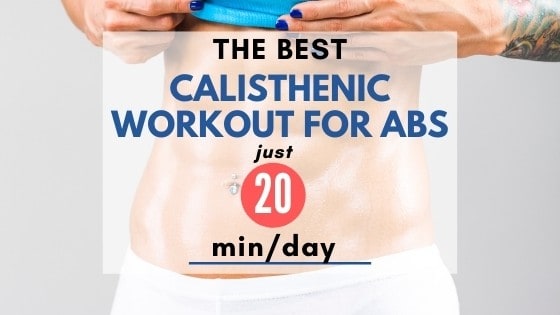
The Most Important Part Of Calisthenics Core Training
Most people assume that sit-ups are an important part of ab training.
Believe it or not- you never have to do sit-ups at all to train your core properly.
Instead, you need to train your core for stability.
In other words, you need to do exercises that improve your ability to resist motion at the spine.
That is how you build a strong core.
Take a squat for example:
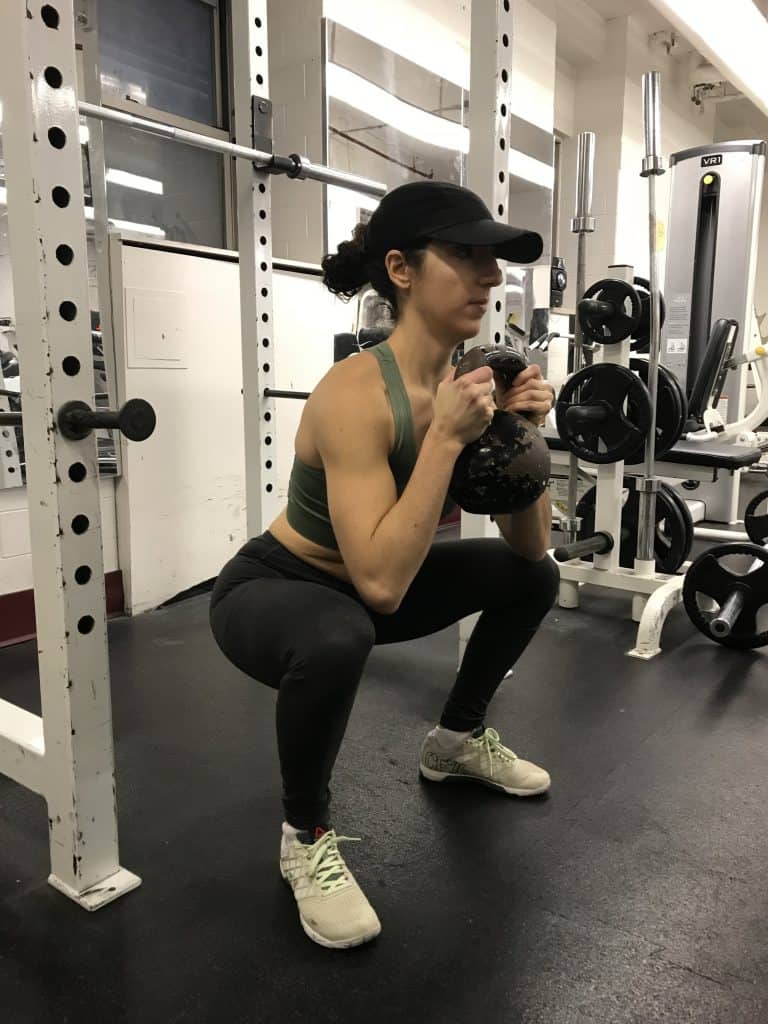
Your core is working to maintain your spine neutral and upright as you exert force through your legs. The same is true for several other exercises.
The overhead press is another great example. Your core must keep your body tight to allow force to be transferred up overhead.
Without you realizing it, your core is constantly working to keep you stable during all types of movement.
So how do you train your core for stability?
I’m glad you asked.
The 4 Types Of Core Stability Exercises
The most important type of core exercises you should do are anti-extension exercises.
In other words, you must be able to resist arching at the lower back.
This is CRITICAL.
Almost every major calisthenic exercise should be done with a flat or neutral spine. If you allow your low back to arch while performing core exercises, you run the risk of getting injured.
This is the position you want to avoid.
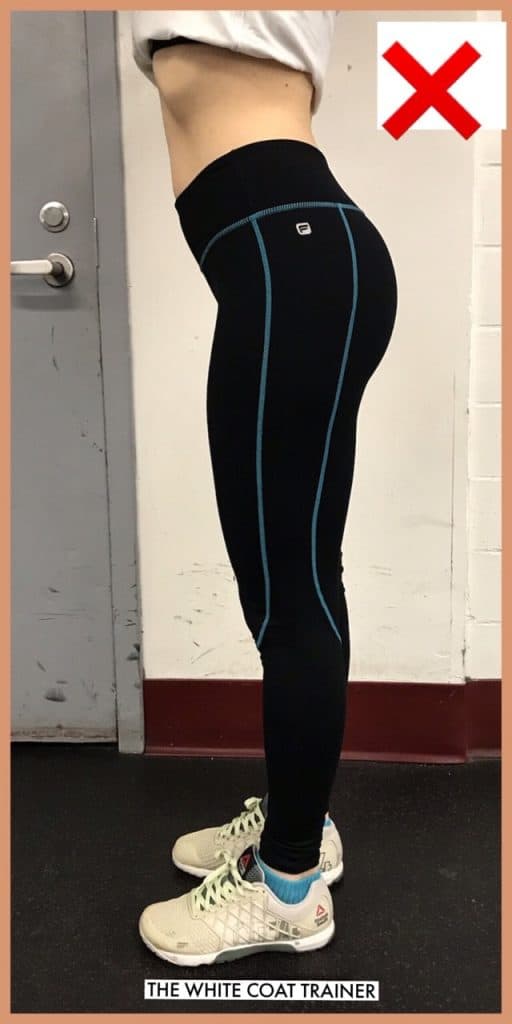
Some examples of anti-extension exercises are:
I’ll show some more concrete examples below.
In each one of these exercises, your core should work to prevent arching of your back.
Now let’s go over a few other movement patterns that train the core for stability. While these are great to add to your routine, anti-extension should be your main focus.
Anti-Rotation Exercises
The next group of exercises are the anti-rotation exercises. These movements resist the twisting of your trunk.
As such, they strengthen the external oblique muscles, which sit on either side of your rectus abdominis.
Some examples of anti-rotation exercises are:
Anti-Lateral Flexion Exercises
The third group of exercises are the anti-lateral flexion movements.
These exercises prevent your body from bending sideways whenever you are carrying an uneven weight. These exercises are essential for teaching lateral body stability that can be applicable to the real world.
Just think about how many times you carry a heavy load on just one side of your body.
Common anti-lateral flexion exercises include:
Anti-Flexion Exercises
The last group of exercises are the anti-flexion exercises. These movements aim to resist flexion or forward bending of the spine. These movements aren’t applicable to calisthenics.
Common anti-flexion exercises include deadlifts, and barbell rows (where you don’t want your spine to bend under heavy loads).
Okay, so now that you know the best way to train your core, let’s go over the best calisthenic ab exercises.
The 5 Best Calisthenics Ab Exercises To Include In Your Workout Routine
The five most effective calisthenics exercises for your core and abs are:
- The Hollow Body Hold
- The Hollow Body Plank
- The L-Sit
- The Reverse Crunch Progressions
- The Leg Raise Progressions
Let’s go over each one by one.
#1 The Hollow Body Hold
The first calisthenic core exercise we will talk about is the hollow body hold.
As simple as this exercise may look, it is by far one of the best calisthenic ab exercises you can do. This exercise builds strength, stability, and helps develop total body control.
It is also the best exercise to learn how to perform abdominal hollowing, which is critical for developing calisthenic strength.
This is what it looks like:
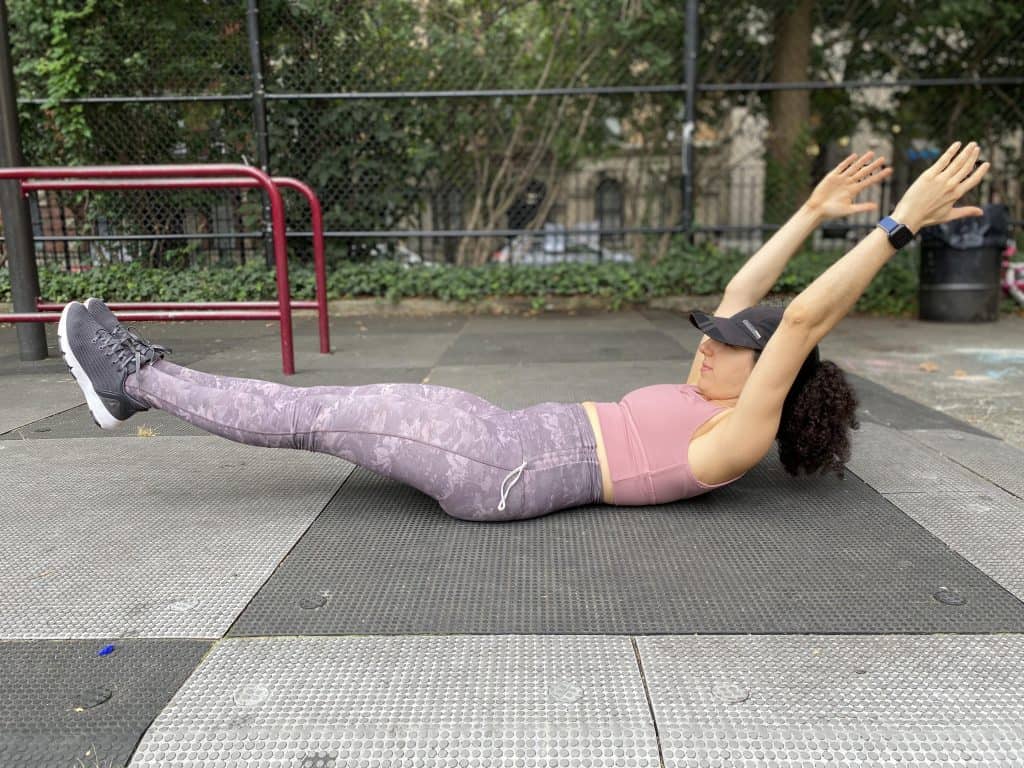
- Make sure to keep your low back completely flat against the floor (do not allow it to arch at all).
- Also, lift your upper back off the floor slightly to place your abs on tension even further.
All you have to do is hold this position for time.
What Exactly Is Abdominal Hollowing?
Abdominal hollowing refers to the position you achieve when you posteriorly tilt your pelvis, and you contract your core muscles inward. It essentially causes your back to round as you pull your abs inward.
This is different from stomach vacuuming, where you simply suck your stomach in as much as you can
Instead, you are contracting your abs inward. Pretend as if you were preparing for someone to punch you in the stomach.
This hollow body position emphasizes the deep muscles of your abdomen, also known as the transverse abdominis.
How To Make The Hollow Body Hold Easier
If this exercise is too challenging for you, you can make this movement easier by bringing your extremities closer to your center of gravity.
You can bring your arms straight up into the air, rather than holding them above your head.
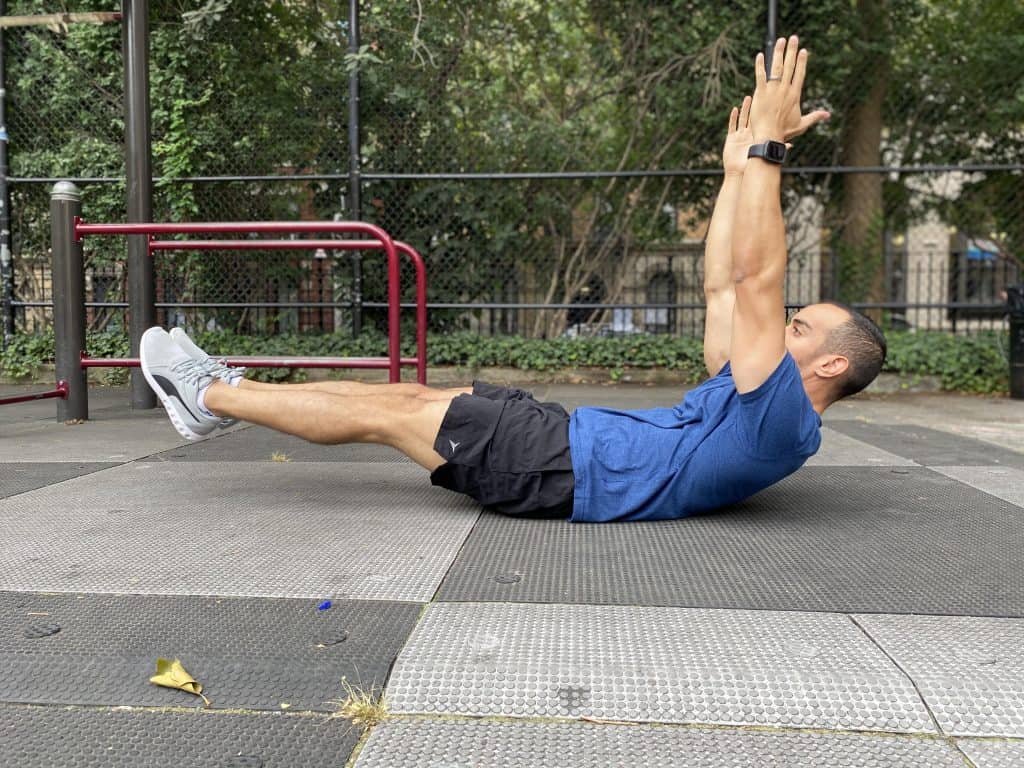
The remainder of the exercise is the same.
Make sure to keep your low back flat on the floor, and your upper back off the floor.
Alternatively, you can bend your knees up toward your chest.
I’ll show you a picture below.
#2 The Hollow Body Plank (& It’s Progressions)
Planks are underrated.
It is one of the most seemingly-easy to-do exercises, yet so many people do it ineffectively.
Your goal shouldn’t be to hold a plank for 5 minutes. Rather, you should use this powerful exercise to learn how to maintain a neutral spine under varying levels of difficulty.
If done correctly, the plank can
- Strengthen the rectus abdominis, obliques, and transverse abdominis muscles
- Reduces your risk of developing low back pain
- Improve your posture
- And strengthen your serratus anterior muscles (an often forgotten muscle group)
This is what a hollow body plank position should look like.
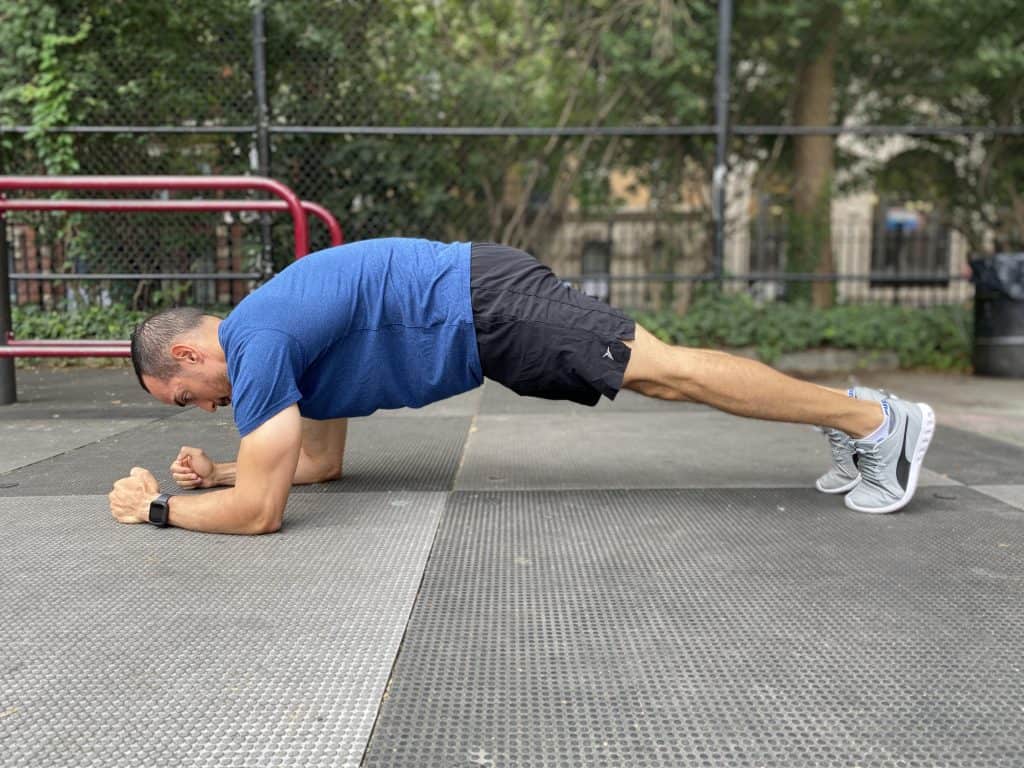
To do this variation correctly, you need to make sure you are doing three things:
- You maintain a hollow body position (core engaged, pelvis posteriorly tilted – NEVER let your low back arch)
- You protract your scapula (to engage your serratus anterior)
- Your glutes are contracted and activated
How To Make The Hollow Body Plank Easier
To make this movement easier, you can perform the hollow body plank on an incline – such as a bench.
Simply place your forearms on the bench, and extend your legs out behind you.
The remainder of the exercise is the same.
#3 The L Sit
The next exercise is the L sit. This exercise is essential for improving the strength of your lower abs as well as your hip flexor strength.
This movement builds “compression” strength – which is the ability to bring your legs and torso closer together.
It can be quite challenging at first, especially if you are a beginner. That’s because this movement incorporates a lot of upper body strength as well. You will need to maintain your entire body weight while you maintain your scapula depressed and elbows extended.
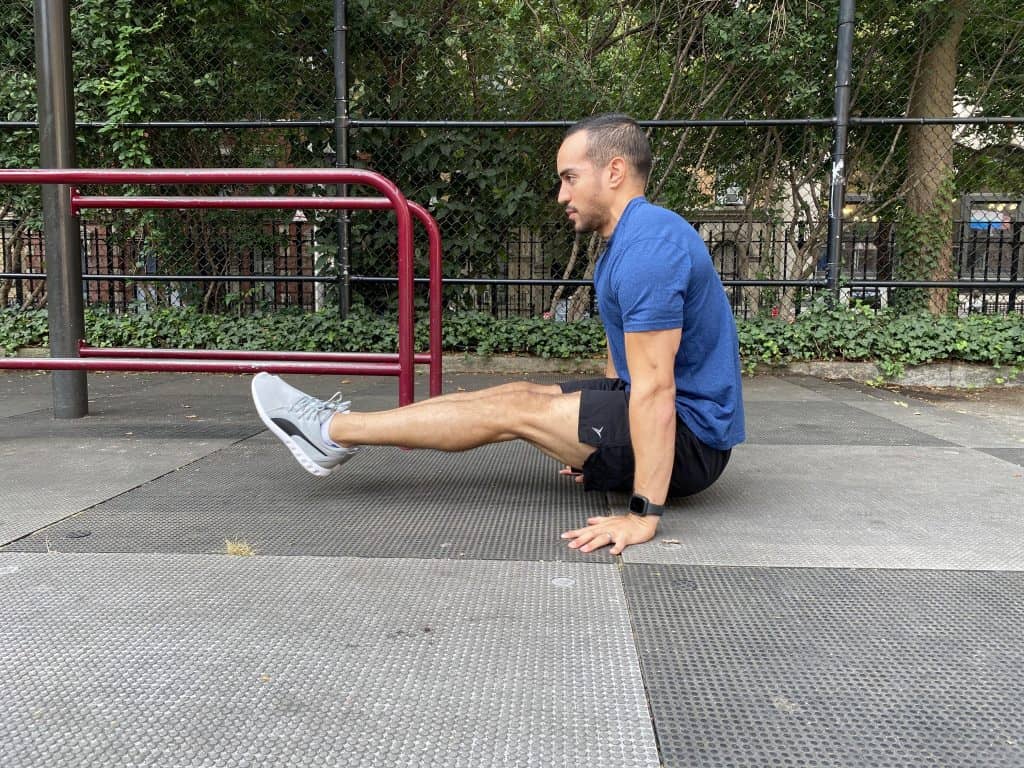
Holding this movement for 30 seconds with your legs completely straight would be very impressive.
How To Make The L-Sit Easier
If it’s too challenging, there are two things you can do.
1.You can perform them with your hands elevated.
This will allow you to do the movement without having to lift your body as far.
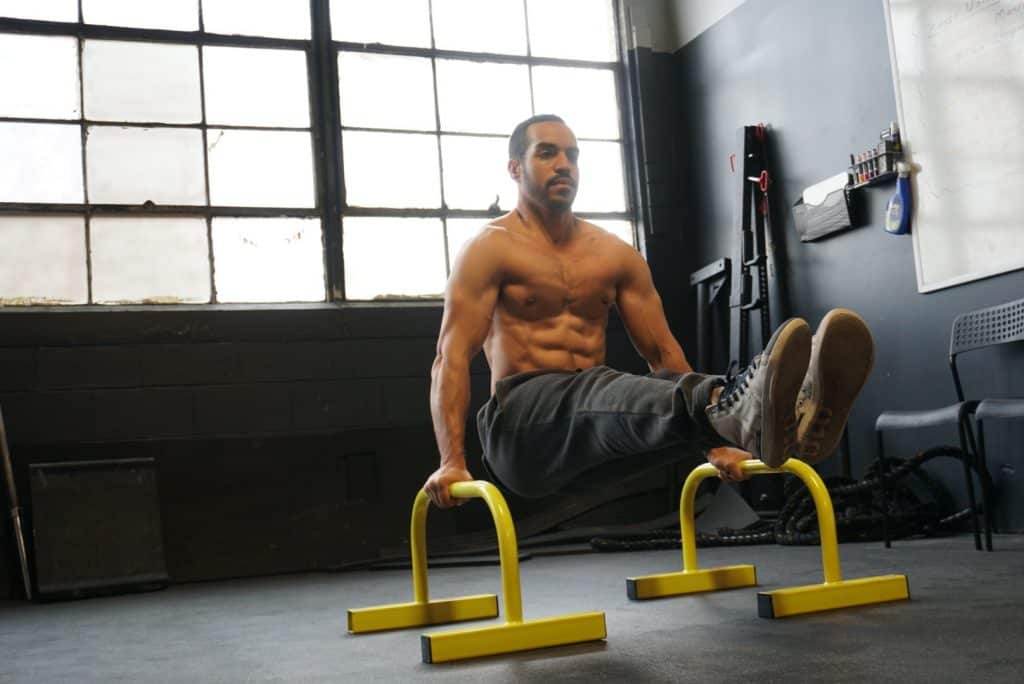
As you get stronger, you can lower the height of the elevation until ultimately you are doing them from the floor.
2. Or you can do seated leg lifts
Seated leg lifts are a great exercise for training the same movement pattern without the use of your upper body.
Here’s what it looks like:
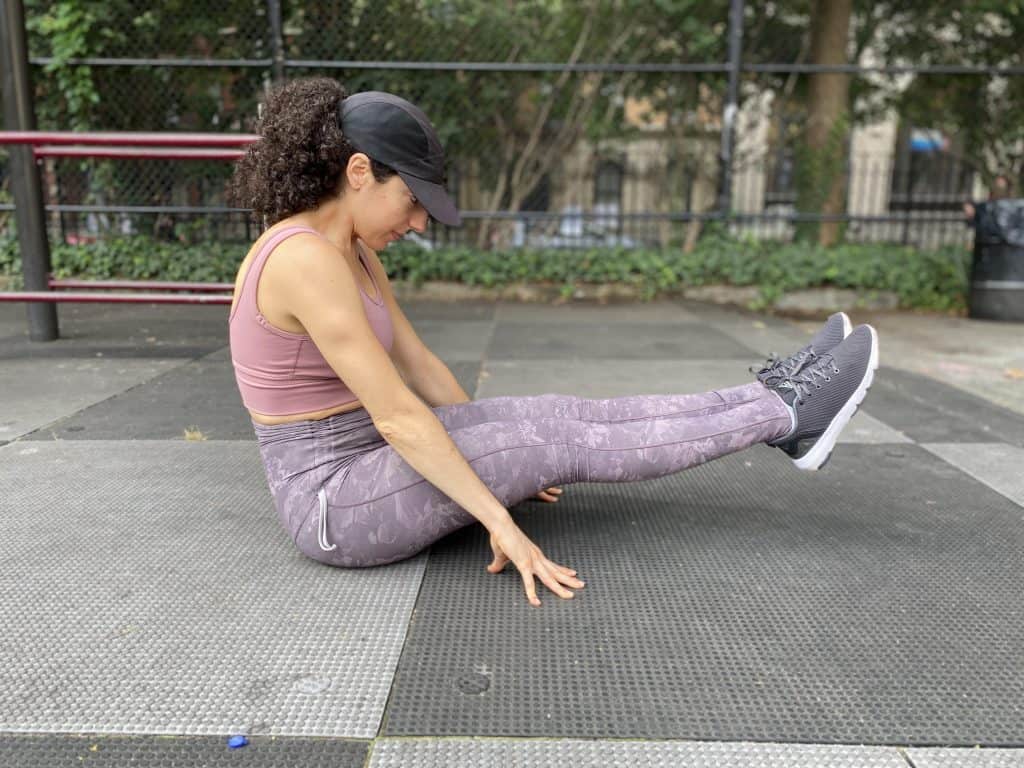
As you get stronger, begin inching your hands down closer to your feet.
The more you can “compress” your abdomen and bring your chest closer to your knees, the more effective the exercise becomes.
#4 Reverse Crunch
You probably are already familiar with the crunch. This exercise, along with the sit-up is controversial as it has been linked to worsening back pain by spine expert Dr. Stuart Mcgill.
I personally never recommend sit-ups or crunches.
Instead, you can do the reverse crunch, which keeps your spine in a more neutral position.
This reverse crunch is performed by lying in a supine position (on your back) and lifting and drawing your legs towards your chest.
To perform the full range of motion, your knees should touch your elbows.
This movement strengthens the rectus abdominis and the deep transverse abdominis muscles.
The beauty of this exercise is that there are several progressions you can do to increase the challenge several-fold. Here’s an entire video showing the different variations you can do.
How To Make The Reverse Crunch Easier
To make the reverse crunch easier, you can simply reduce the range of motion. This is called a lying bent knee raise, which you will see a picture of below.
#5 Hanging Leg Raises
The last exercise is the leg raise. There are a few different ways you can perform this exercise, but the best way to do it is while hanging from a bar.
Not only does this movement strengthen the core, it also improves your flexibility.
The key with this exercise is to try and limit any forward-back swinging and to keep your pelvis in a posteriorly tilted position (the same as you did with the hollow body).
Letting your low back arch can defeat the purpose of the movement.
Here are several hanging leg raise variations you can do based on your skill level.
How To Make The Hanging Leg Raise Easier
The only way to make this movement less challenging is to perform them on a dip station with a backrest. These are those machines that have padding for your forearms and your back.
I also have an entire post on hanging ab exercises you can do at any level!
Bonus Exercise: The Side Plank
I just had to throw a quick bonus exercise into the list – the side plank.
This is by far one of the best exercises for developing tremendous core strength and stabilization. No other exercise targets the obliques better than this movement.
It also helps strengthen and stabilize your shoulder joint.
Here are a few tips to make sure you get the most out of this movement.
- Keep your feet stacked on top of each other with your hips and knees fully extended
- Squeeze your glutes and don’t let your trunk bend laterally in any direction (i.e your spine should be neutral)
- Keep your neck in line with the rest of your body
This exercise can be done on your forearm, on your hand (which is more difficult), or with different types of rotational components to make it difficult.
Here’s a video showing some of the variations I mentioned above.
How To Make The Side Plank Easier
To make the side plank easier, you can do one of three things:
- You can stagger your stance to make a wider base of support,
- You can lower your bottom knee to remain in contact with the floor, or
- You can do the exercise on an incline like shown below.
Alright, so now that you know which exercises are the best of the best – it’s time to start working out.
If you are a beginner, below are some of the variations you can choose from to target these important exercises.
Beginner Calisthenics Ab & Core Exercises (Regressions)
Here is a short list of beginner ab/core calisthenic exercises you can do when you’re first starting out.
- Incline Planks
- Lying Bent Knee Raises
- Hanging Bent Knee Raises
- Modified Hollow Body Holds
- Bird dogs (a great beginner friendly anti-extension exercise)
- Dead bugs (a great beginner friendly anti-extension exercise)
Incline Planks
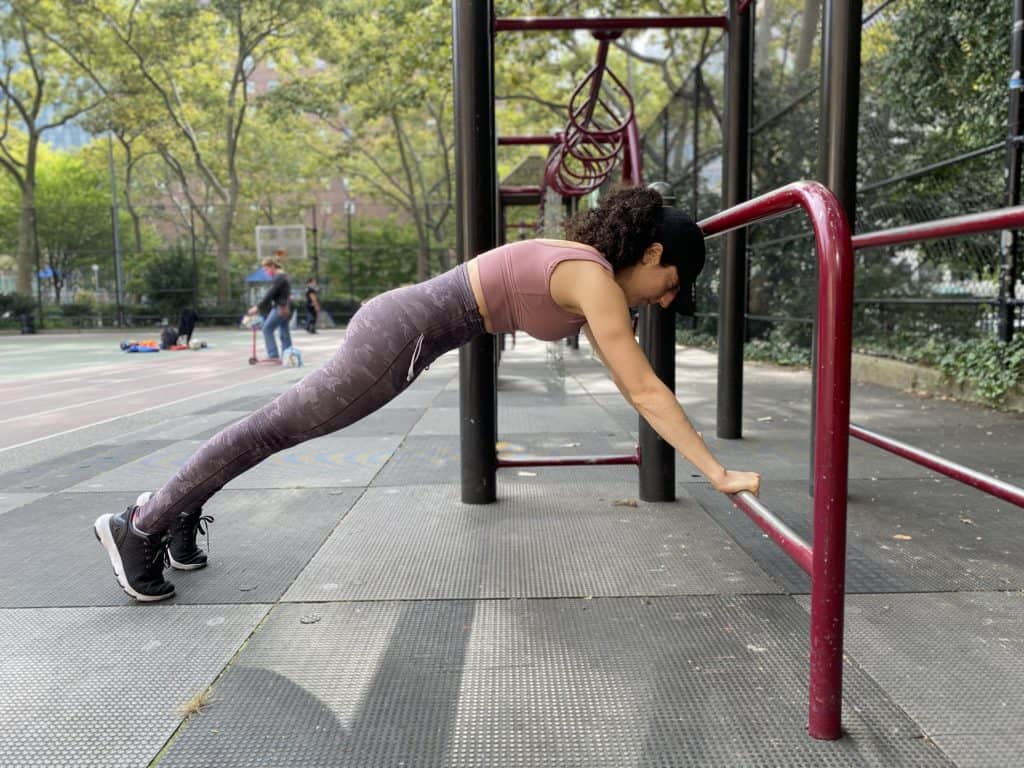
Lying Bent Knee Raises
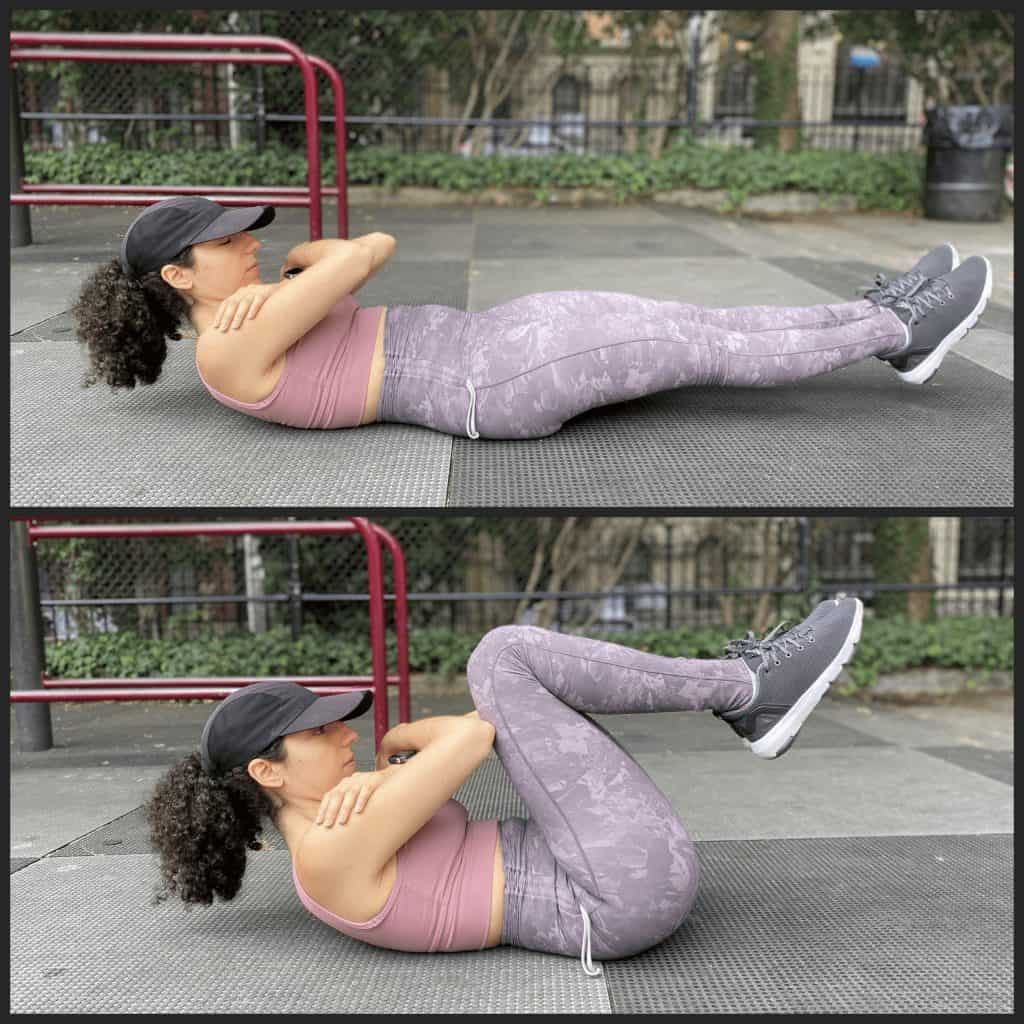
Hanging Bent Knee Raises
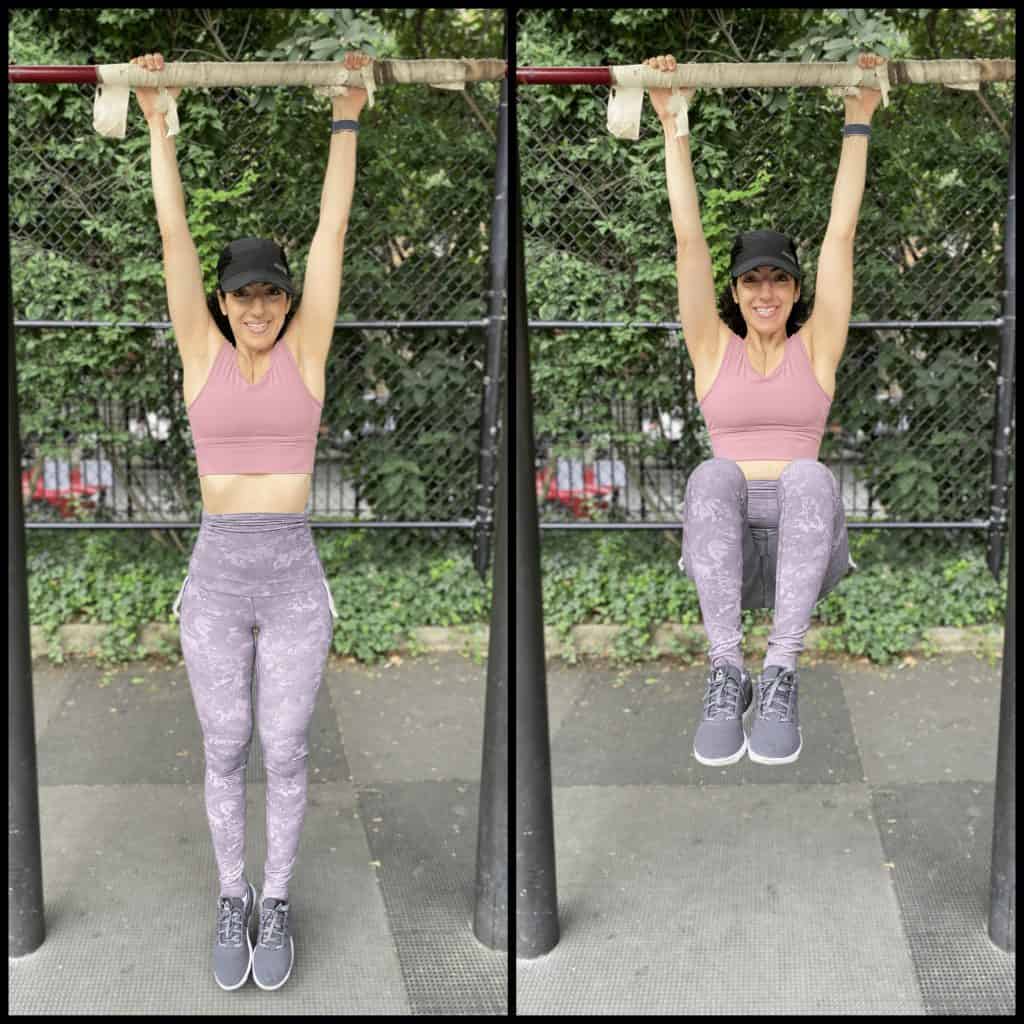
Modified Hollow Body Holds
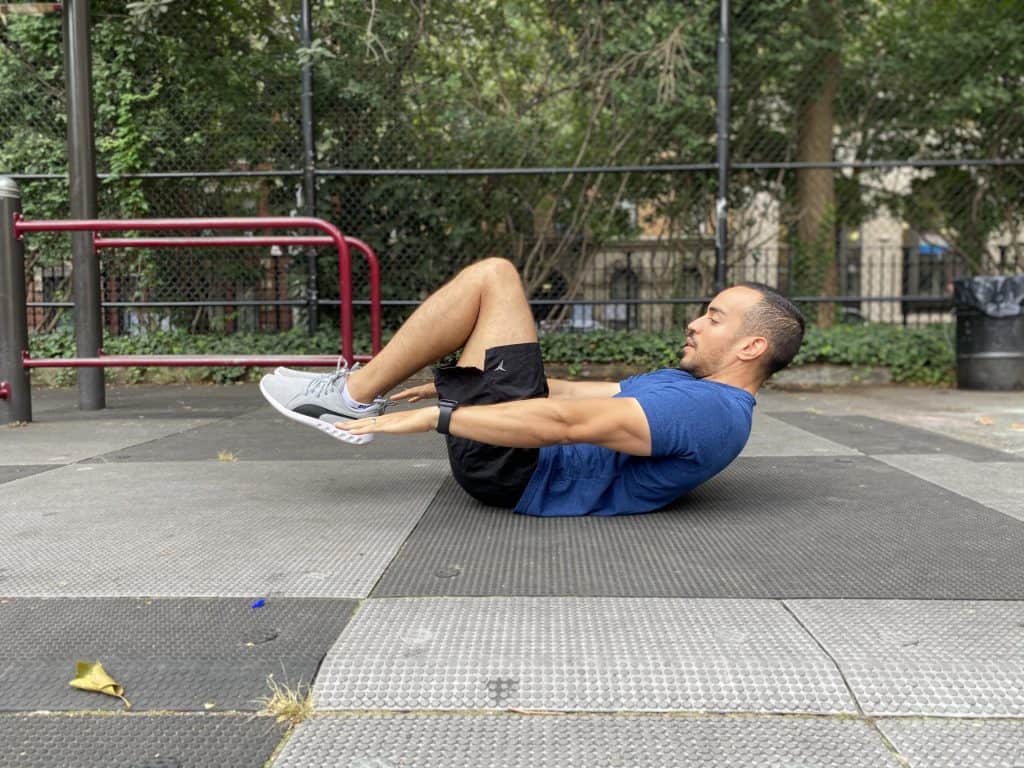
Advanced Calisthenics Ab & Core Exercises (Progressions)
As you begin to get stronger, you can then work your way up to more advanced / challenging ab exercise progressions such as:
- Weighted Hollow Body Holds (holding a weight in your hands)
- Long Lever Planks
- Plank Walkouts
- Toes To Bar
- Dragon Flags
- Font lever Raises
Long Lever Planks
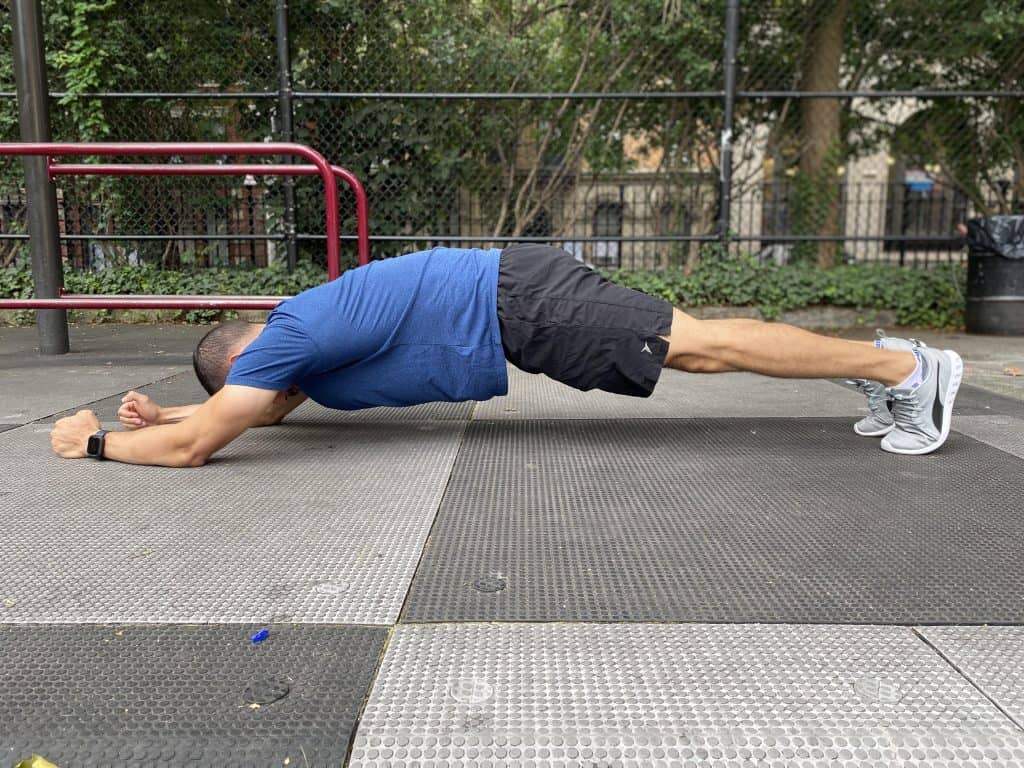
Plank Walkouts
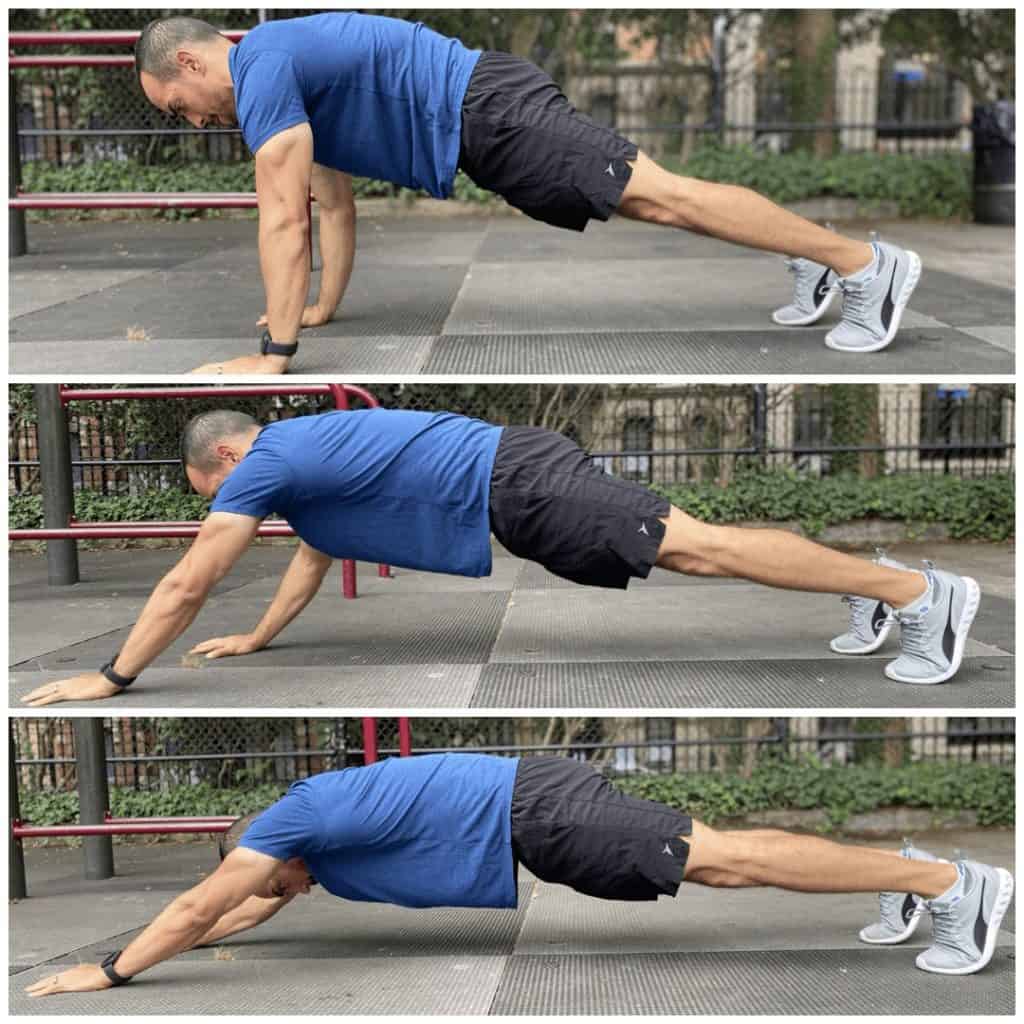
Toes To Bar
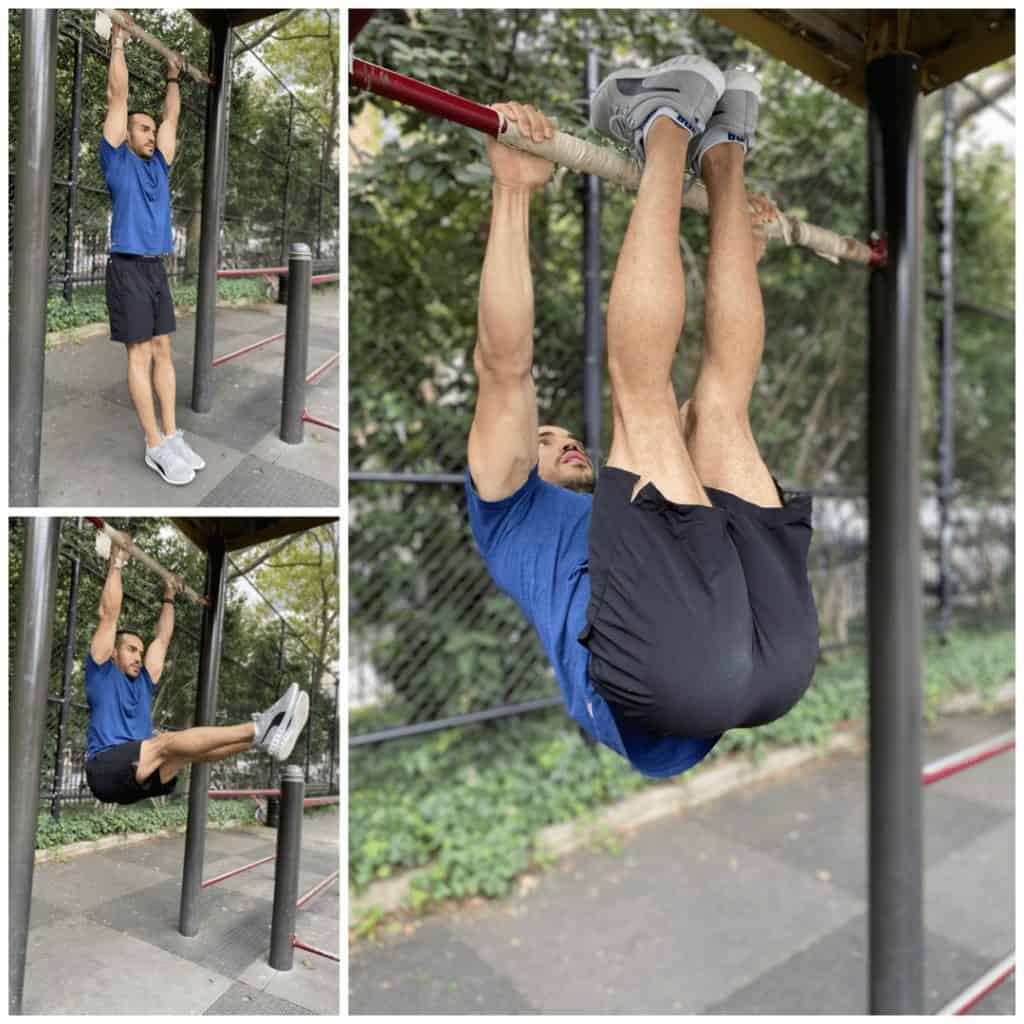
Dragon Flags
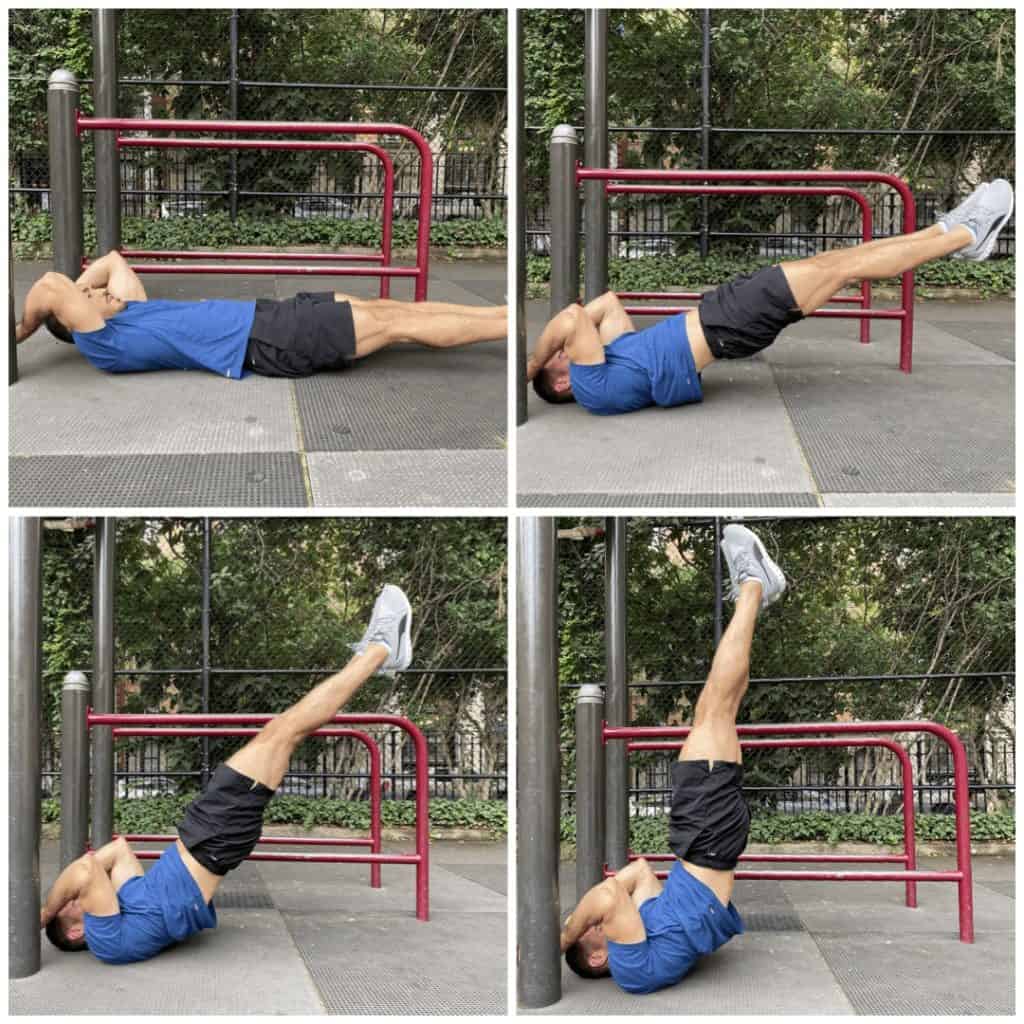
Font lever Raises
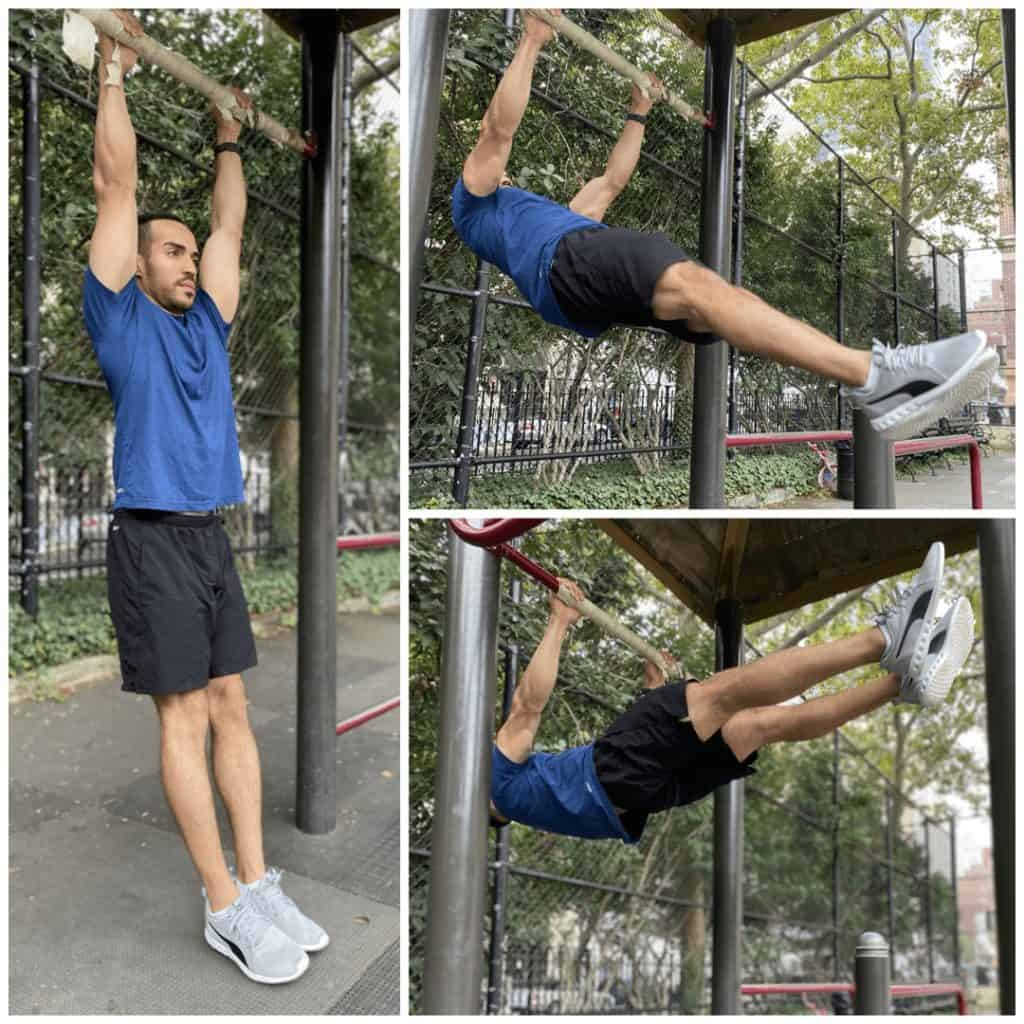
Always progress slowly and ensure that you are doing every exercise with proper technique!
The Best Calisthenics Ab Workouts
Alright, here are your calisthenic ab workouts. There are two separate workouts, each one focusing on the 5 best ab/core exercises you can do.
Each workout should be done at least once per week.
They can be added on to the end of your normal workouts sessions, or done as stand-alone sessions.
Lastly, they should take no more than 15 minutes to complete.
Ab Workout 1
| Exercise | Sets | Reps |
|---|---|---|
| Plank (Hollow Body) Variation | 2 | 20 seconds |
| Leg Raise Variation | 2 | 10-12 repetitions |
| Side Plank Variation | 2 | 15 seconds |
Ab Workout 2
| Exercise | Sets | Reps |
|---|---|---|
| Hollow Body Hold Variation | 2 | 20 seconds |
| Reverse Crunch Variation | 2 | 10-12 repetitions |
| L Sit Variation | 2 | 15 seconds |
You will notice that this workout can be done regardless of whether you are a beginner, intermediate or advanced athlete.
It all depends on the variation you pick, and would suit your skill level.
Other Related Questions
Is a six-pack possible from calisthenics?
You can build a six-pack from calisthenics because almost every bodyweight exercise will train your core if done properly.
A six-pack requires two things:
- Hypertrophy of the rectus abdominis (i.e. make them grow), and
- Low Body fat percentage
At the end of the day, getting a six-pack depends on several factors such as
- your initial body weight, and body type
- your initial body fat levels
- your diet plan and nutritional intake
- your consistency in performing exercises
You wont be able to see your six-pack unless you lose enough body fat to make them visible.
Are all ab exercises considered calisthenics?
In general, all traditional ab exercises are calisthenic based as you are using your bodyweight to challenge your midsection.
At the same time, almost all bodyweight exercises are core exercises as well.
Can I train abs even with belly fat?
Yes, you can train your abs even if you have belly fat.
In fact, you should train your abs regardless of your body fat levels. You can always strengthen the abdominal muscles underneath the fat to provide stability and balance to your body.
If you couple this with a weight loss nutrition plan, you will lose belly fat while developing your core musculature.
Is it ok to do ab exercise every day?
It is not recommended that you train any body part every day. It is important to give your muscles time to recover from your workouts.
In general, you should rest at least 1-2 days before training a specific muscle group again.
So how often should you exercise abs?
At least 2 times per week week.
You can experiment with 3-4 x per week, but I personally find twice a week is the sweet spot.
Do you really need to train your abs separately?
If you regularly perform compound exercises that challenge your core, then you will already be getting ab development.
However, if you want maximal development of your abs, then it is necessary to train them separately. Especially the oblique muscles.
Why is ab training important?
Ab training is essential because this is the foundation from where all your strength comes from.
There are many benefits of strengthening your core.
- A strong core will allow you transfer force and power through your arms and legs while keeping your spine in a neutral position.
- A strong core is also essential for spinal health. It will help you maintain your posture and avoid low back pain.
Get a complete Calisthenics Workout Training Template For Free
Enter your email below and I’ll send you a “fill in the blank” workout template for both upper and lower body calisthenics workouts.
Final Words On Calisthenics Ab Training
So there you have it. Two simple core workouts that you can adapt to your training routine.
Now I want to hear from you.
Which movement do you want to improve first?
Any exercises I leave out?
Comment below and let us know!
Other Amazing Calisthenics Exercises & Workouts
- The 21 Best Bodyweight Chest Exercises [At-Home Workout]
- The 21 Best Calisthenic Back Exercises [You Can Do At Home]
- The 21 Best Bodyweight Shoulder Exercises [Videos, FAQs & More]
- 3 Simple Calisthenics Leg Workouts [No Equipment Needed]

Alex Robles, MD, CPT / Brittany Robles, MD, MPH, CPT
Alex & Brittany Robles are physicians, NASM CPTs, health & fitness experts, and founders of The White Coat Trainer: a site dedicated to improving the health and fitness of busy professionals. Their advice has been featured on KevinMD, The Doctor Weighs In, My Fitness Pal, Reader’s Digest, Livestrong, and The Active Times. Learn more about them here.

Can doing specifically planks lead to costochronditiis? Or like anything else, injury happens with poor form? And if so, what would poor form be when performing a plank that could lead to this condition?
Hi Cee,
I dont think that planks would cause costochondritis. Unfortunately, that condition is very poorly understood in the field of medicine. The stress of the plank should primarily be felt in the abdomen, and it shouldnt place stress in your chest area.
Poor form primarily results form you not maintaining a neutral spinal position. Any extension/arching of the low back constitutes poor, and this could lead to low back issues.